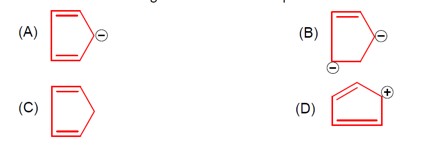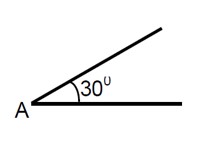Class 11th
Get insights from 8k questions on Class 11th, answered by students, alumni, and experts. You may also ask and answer any question you like about Class 11th
Follow Ask QuestionQuestions
Discussions
Active Users
Followers
New answer posted
2 months agoContributor-Level 10
For the weak acid HA in the presence of strong acid HCl:
Ka = [ (Cα + 0.1) * Cα] / [C (1-α)] ≈ (0.1 * 10? ²α) / 10? ² = 0.1α
Given Ka = 2 * 10?
2 * 10? = 10? ¹ * α
α = 2 * 10?
Ans = 2
New answer posted
2 months agoContributor-Level 9
According to principle of equi-partition of Energy, the average energy per molecules associated with each degree of freedom is (1/2)kT.
New answer posted
2 months agoContributor-Level 10
Mole of CH? = 6.4 / 16 = 0.4 and mole of CO? = 8.8 / 44 = 0.2
Total mole = (0.4 + 0.2) = 0.6 mole of a non-reacting mixture of gas
Using Ideal Gas Law; P = nRT / V
P = (0.6 * 8.314 * 300) / 10 = 149.65 kPa
Ans = 150 (Rounded off)
New answer posted
2 months agoContributor-Level 9
m (dv/dt) = P ⇒ ∫v dv = ∫ (P/m) dt ⇒ v = (2Pt/m)¹/²
⇒ ∫dx = ∫ (2P/m)¹/² t¹/² dt ⇒ x = (2P/m)¹/² (2/3)t³/² ⇒ x ∝ t³/²
New answer posted
2 months agoContributor-Level 10
Partial Pressure of O? = K? * solubility (K? = Henry's constant)
Solubility = PO? / K? = 20 / (8.0 * 10? ) = 2.5 * 10? = 25 * 10? M
Ans = 25
New answer posted
2 months agoContributor-Level 10
For a bouncing object with initial height h = 5m and coefficient of restitution e = 0.9 (so e² =0.81):
Total distance traveled, d = h + 2e²h + 2e? h + . = h * (1 + e²) / (1 - e²)
Total time taken, t = √* (2h/g)* + 2√* (2e²h/g)* + 2√* (2e? h/g)* + . = √* (2h/g)* * (1 + e) / (1 - e)
Average speed = d/t = √* (gh/2)* * (1 + e²) / (1 + e)² = 5 * (1.81) / (1.9)² = 2.50 m/s
New answer posted
2 months agoContributor-Level 9
Using conservation of Angular momentum along axis of rotation, we can write
Mr²ω = (Mr² + 2mr²)ω? ⇒ ω? = Mω / (M + 2m)
New answer posted
2 months agoContributor-Level 10
In an aromatic compound, overall delocalization is processed by the electrons according to Hückel's rule. For the compound in question, the total number of delocalized electrons is 6.
New answer posted
2 months agoContributor-Level 10
The displacement S is calculated by integrating the velocity function:
S = x - x? = ∫? ¹ v dt = ∫? ¹ (v? + gt + Ft²) dt = v? + g/2 + F/3
New answer posted
2 months agoContributor-Level 10
The acceleration 'a' is calculated as:
a = (g sinθ) / (1 + I/mr²) = (10 * sin30°) / (1 + 2/5) = 25/7 m/s²
The time 't' is calculated as:
t = 2v / a = (2 * 1) / (25/7) = 0.57 s
Taking an Exam? Selecting a College?
Get authentic answers from experts, students and alumni that you won't find anywhere else
Sign Up on ShikshaOn Shiksha, get access to
- 65k Colleges
- 1.2k Exams
- 679k Reviews
- 1800k Answers


